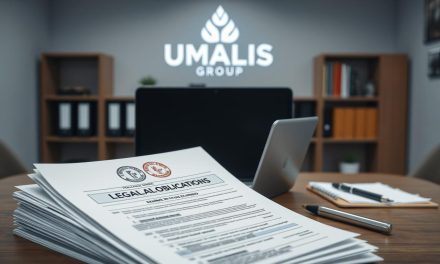In fast-moving markets today, being able to read a situation and act quickly turns uncertainty into opportunity. Employers prize a calm, deliberate mindset that learns fast and helps the team deliver under real limits.
This guide shows why adaptability means more than being easygoing — it is a set of behaviors that reduce stress and improve decisions when new tools, jargon, or processes appear. In fields from hospitality to healthcare, newcomers must join a new work « family » fast and make a strong first impression.
Imposter feelings are common, but they can signal where to prepare. Do your homework — use news and brief industry research to align with client expectations from day one. Learn how small choices lead to better reviews, referrals, and repeat contracts.
Later, we’ll offer clear examples and practical tactics you can use in France to read the room and communicate the right way. For quick onboarding tips and a checklist, see this practical guide.
Table of Contents
Key Takeaways
- Adaptability is an active mindset that helps you respond well to change.
- Preparing with research lowers stress and shortens ramp-up time.
- Clear communication earns trust and repeat work.
- Small daily practices create long-term career opportunities.
- Recognize imposter feelings and turn them into smart questions.
preparation checklist and onboarding tips
Why Adaptability Matters for Freelancers in Today’s Fast‑Changing Work Landscape
When industries pivot fast, being able to read a situation and act is what keeps projects on track.
Faster change means new challenges appear regularly, so being ready is no longer optional. Clients value people who can interpret shifts, apply clear thinking, and keep teams moving when priorities switch.
Expecting variation reduces stress. When you treat surprises as facts to collect, you respond with calm decisions instead of tension or second‑guessing. That approach also opens opportunities — meeting a revised deadline or adjusting scope can win more work.
- Adaptable professionals help the team stay steady during transitions by framing problems as solvable.
- Treat every shift as data: note what changed, why, and how the group reacted to build a playbook for next time.
- Across any industry, pausing to gather facts and use structured thinking improves decisions under pressure.
Building this capacity is intentional. Track lessons from each client engagement and use them to fuel long‑term career momentum. For practical strategies and a checklist to apply in France, see this market change adaptation guide.
Freelance adaptability skills: what they are and how they differ from flexibility
When plans shift suddenly, your response defines whether a project stalls or moves forward. This section explains the practical difference between adjusting within a known frame and thriving when the frame itself changes.
Adaptability defined: managing unexpected situations with calm and initiative
Adaptability is the skill and ability to handle unexpected situations by staying composed, reading new signals, and acting with initiative to support outcomes at work.
Flexibility vs. adaptability: accommodating change versus thriving in new situations
Flexibility adjusts methods inside familiar boundaries. Adaptability steps in when the context, tools, or goals are new and require reframing the problem.
The present-time reality: faster industry shifts, evolving client expectations, and opportunity
Compressed timelines and midstream handovers are common now. Use critical thinking to separate facts from assumptions and gather the right information fast.
« Practice observing, hypothesizing, testing, and refining — that cycle builds confidence and faster decisions. »
| Trait | Flexibility | Adaptability |
|---|---|---|
| Context | Known processes | New or shifted frames |
| Approach | Adjust routine | Re-scope and act |
| Value | Efficiency | Strategic delivery |
| How to grow | Practice variations | Document signals and translate past experiences into the current way |
The essential soft skills that power adaptability
Strong interpersonal habits make it fast to join a new team and start producing value. These core soft skills form the engine that turns uncertainty into clear action for individuals and teams.

Communication that prevents friction
Active listening, clear expectations, and audience-aware messaging cut misunderstandings. Good communication means asking targeted questions and confirming next steps with managers and clients.
Problem-solving and creative thinking
Map constraints, generate options, and pick a solution the group can execute now. Practical creativity converts challenges into workable solutions without overcomplicating the plan.
Resilience, collaboration, and emotional intelligence
Resilience is learning from tight deadlines and coming back better. Collaboration means aligning with diverse personalities and workflows to plug in quickly.
High emotional intelligence helps regulate stress, show empathy, and keep relationships constructive under pressure.
Learning agility, responsiveness, and critical thinking
Quick learning lets you adopt new tools and connect past experience to current tasks. Responsiveness and initiative show reliability when information shifts.
Critical thinking is the repeatable method to assess situations, weigh options, and decide without letting emotions take over.
Risk management and a personal playbook
Identify likely risks, rate impact and likelihood, choose mitigations, and communicate trade-offs to management and clients. Build a simple playbook that links each skill to concrete behaviors you practice on every mission.
- Tip: For practical onboarding moves that lead to career success, see this career success guide.
« Small, repeatable behaviors create trust faster than one big gesture. »
Adapting fast on a new mission: client-first moves that work
A strong start combines preparation, punctuality, and a respectful eagerness to learn. Block out time before day one to research the organization, the department, and recent news so you arrive with helpful context.
Lead with a positive, professional attitude. Show initiative while making it clear you will respect how the team already works. Punctuality and confirming address and start time reduce early friction.
Observe like a scientist: listen, watch, and record processes, jargon, tools, and local culture before suggesting changes. This helps you match expectations and prioritize tasks that matter most to the manager.
- Ask concise, timely questions when others aren’t under acute pressure to avoid interrupting work.
- Use breaks to build relationships—small conversations lead to stronger trust and future opportunities.
- Request feedback mid-mission and at wrap-up to align expectations and improve performance.
« Deliver what the manager asked for within real constraints, and document decisions so information is easy to revisit. »
Practical tips: arrive early, carry essential gear, and treat every job as a short skills sprint—note what sped your onboarding so you can replicate it with other clients.
Mindset and stress management for sustainable performance
A calm question can turn a confusing moment into a clear next step. Use that approach when pressure rises. Pause, breathe, gather facts, and pick the next best action. This small practice protects mental energy and improves decisions.
Reframe challenges as growth opportunities. Treat setbacks as information to learn from. Ask what you can take away now that will speed your learning and future performance.
Reframe challenges as opportunities for growth
When you view change as a chance to learn, anxiety often falls. Look for two practical lessons after each tough moment: one tactical and one mindset shift.
Acknowledge the inner voice and practice self-compassion
Notice self-doubt without judgment. Quiet the inner critic with a kind reply and a short breathing break to steady your focus.
Celebrate small wins to reinforce adaptive habits
Track tiny wins: clarified requirements, helpful questions, or a timely update. These build momentum and make new behaviors stick.
« Small routines — pause, breathe, gather facts — preserve mental bandwidth when times get tight. »
- Use a growth-focused mindset to reframe challenges and spot learning opportunities.
- Keep a brief learning log to note what triggered stress and what worked.
- Ask teammates for support when needed; it lowers stress and improves decisions.
| Focus | Action | Benefit |
|---|---|---|
| Mindset | Reframe problems as learning chances | Reduced anxiety, clearer choices |
| Emotion | Practice self-compassion and short resets | Steady performance under pressure |
| Habits | Celebrate small wins and log lessons | Faster learning and durable change |
For a practical guide to building consistency and winning repeat work, see this path to success.
Workflows that support adaptability: time, tasks, and information management
Designing your day around focused blocks and built-in slack keeps progress steady when inputs shift.

Timeboxing protects deep focus: reserve clear blocks for high‑impact tasks and add short buffers around handoffs. Buffers absorb surprises so deadlines stay realistic and stress stays low.
Lightweight documentation speeds repeatability. Use short checklists, quick SOPs, and annotated screenshots so recurring work runs faster without heavy admin.
- Set daily syncs or brief standups to align the team and surface blockers early.
- Keep key information in one accessible spot so others can find context when plans change.
- Design workflows with risk-thinking: flag fragile steps and add early validations or staggered reviews as solutions.
Make a practice of closing loops fast: acknowledge requests, confirm next steps, and note decisions. Allocate resources consciously—delegate when possible and match effort to value.
Review how individuals adapted each week and capture tweaks to the system so adaptability improves over time. For tips on setting efficient rhythms, see efficient work routines.
Showcasing adaptability to win clients and repeat work
Turn past surprises into proof that you deliver reliable results. Use concrete stories and clean samples to make it easy for a client to see how you behave under pressure.
Portfolio and profile: spotlight change-driven results and client feedback
Curate entries that state the initial challenge, the action you took, and the measurable outcome.
Include short quotes from clients and a one-line metric when possible. On your profile, highlight soft skills and specific skills with brief example narratives that show you met shifting expectations.
Proposals and communication: set expectations and show responsiveness
Use proposals to state scope, timelines, and communication channels up front.
Offer a simple « ways of working » section so clients know how to reach you and how you handle changes. Add a sample status update or risk note to demonstrate tone and clarity.
References and reviews: leverage social proof for future missions
Ask referees to give one example of how you stayed calm, coordinated others, and delivered despite change.
Feature selected feedback and platform favorites in case studies to show how reliable delivery built repeat work and boosted your career prospects.
« Clear evidence and timely communication turn past experiences into new opportunities. »
Industry-aware situational savvy for French clients
Entering a new French workplace means learning local rhythms as quickly as you can. New teams often feel like small families with established traditions and ways of working. You have limited time to decode jargon and process flows, so observing first is smart.
Reading the room: norms, pace, and preferred communication styles
Watch greetings, meeting cadence, and decision pace. Match your tone and timing to the group so you don’t overstep. If emails are concise and formal, mirror that style; if standups are brief, keep updates short and focused.
Use early interactions to gather insights about how people prefer updates, escalate risks, and confirm next steps. Build relationships during breaks—those casual moments reveal who holds context on topics and how others like to collaborate.
- Mirror preferred communication ways: subject lines, short summaries, or quick syncs.
- Time your questions—avoid peak load moments and offer to document steps that help everyone later.
- Share a brief plan for handling change upfront: how you’ll flag risks and propose options.
Keep work artifacts bilingual when it helps clarity. When unsure, ask for a quick pulse-check on tone and detail level so your messages land as intended. Capture cultural insights that helped you integrate faster and reuse them on future French missions.
professional development guidance can help you practice these approaches and strengthen relationships with clients and teams.
Conclusion
Small, deliberate habits let you respond to change without losing momentum. Invest in a compact toolkit: clear updates, timely questions, and short risk notes. Those repeatable behaviors form the foundation for reliable solutions and lower stress on the job.
Adaptability makes people more valuable to a client and to the team. Show one strong example in your portfolio that highlights a shifting brief, delivered under tight deadlines, and include brief feedback and impact metrics.
Close every mission with a short reflection: capture resources, what worked, and a concrete next step. With practice this skill becomes teachable and creates compounding opportunities for the future.
Want more on handling diverse roles and sector change? See this job diversity guide to collect examples and resources for your next mission.
FAQ
What exactly are adaptability skills and why do they matter for independent workers?
Adaptability skills are the personal and interpersonal abilities that help you handle change, mixed expectations, and tight timelines. For independent workers they matter because industries shift fast, client needs evolve, and the ability to learn, pivot, and stay professional wins repeat business and strong referrals.
How do adaptability and flexibility differ in practice?
Flexibility means adjusting hours or tasks to fit circumstances. Adaptability goes further: it’s about reading context, proposing better solutions, learning new tools quickly, and leading change when needed. Adaptability turns surprises into opportunities rather than just accommodations.
Which soft abilities most power an adaptive approach on the job?
Key traits include clear communication (active listening and precise messaging), creative problem solving, resilience after setbacks, collaborative habits, emotional intelligence, learning agility, quick responsiveness, critical thinking, and basic risk management. Together they help you act confidently under pressure.
How soon should I start researching a new client or project?
Do the homework as soon as you get the brief. Learn the organization’s goals, tools, and pain points. Early research reduces mistakes, helps you ask smart questions, and shows professionalism from day one.
What’s a practical first-week checklist to adapt quickly to a new mission?
Spend time listening and observing the team, confirm priorities with the hiring manager, map key processes and jargon, follow local ways of working before suggesting changes, set short milestones, and create a plan for regular feedback.
How can I ask for feedback without seeming insecure or intrusive?
Ask concise, action-focused questions after deliverables or meetings: “Did this meet your expectations? What should I change next time?” Frame feedback as a way to improve outcomes for the client, and schedule brief checkpoints rather than ad-hoc requests.
What mindset helps reduce stress during busy or uncertain periods?
Reframe challenges as growth chances, practice self-compassion when things go wrong, and celebrate small wins to build momentum. That mindset keeps you resilient and focused on solutions instead of getting stuck on problems.
Which time-management tactics support responsive work without burning out?
Use timeboxing for focused work, add buffers for unexpected tasks, and prioritize based on impact and deadlines. Lightweight documentation of repeatable steps also saves time later and reduces friction when handoffs occur.
How should I show adaptability in my portfolio and proposals?
Highlight concrete results where you navigated change—short case summaries, before/after outcomes, and client feedback. In proposals, state how you’ll handle surprises, set clear milestones, and show examples of quick pivots that improved results.
What’s the best way to build trust quickly with a French client or team?
Read the room: match the preferred communication style and pace, respect formalities when appropriate, and demonstrate reliability through on-time delivery and clear status updates. Small cultural touches and consistency go a long way.





